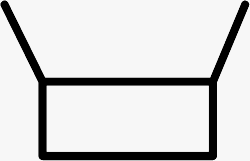If you’re interested in fashion, chances are you’ve come across some vegan leather bags, wallets, jackets or clothes in stores or online. In recent years, the vegan leather market has exploded as an eco-friendly leather alternative. From fast fashion brands like H+M to high fashion brands like Stella McCartney, brands of all different price points are offering their versions of vegan leather. In fact, the vegan leather market was valued at 61.5 million in 2022 and is projected to grow to 106 million by 2030. But what is vegan leather, and is vegan leather sustainable? In this article we’ll explore vegan leather– what it’s made of and its environmental impact of vegan leather- as well as some alternatives to vegan leather.
What is Vegan Leather
The term “vegan leather” actually refers to a large variety of materials. Sometimes called faux leather or pleather, vegan leather alternatives have one thing in common: a lack of animal content. Unlike real leather, which is produced from animal hides like cow hides or sheep hides, vegan leather is completely man-made.
Vegan leather was invented in the 1920’s, with the first iteration being PVC (polyvinyl chloride). PVC is created from petrochemicals like crude oil with the addition of toxic chemicals in order to create a soft, flexible, hide-like material. While still on no longer the most common form of vegan leather, PVC has declined in popularity.
The most common vegan leather on the market, making up 55% of the vegan leather market in 2021, is polyurethane, commonly called PU. The other 45% of the market is made up other types of vegan leather like pineapple leather, cactus leather, apple leather and Mirum, a bio-based alternative made from rubber Below we will discuss the pros and cons of different vegan leathers.
Is Vegan Leather a Sustainable Leather?
Each type of vegan leather has different pros and cons. When analyzing whether or not a product is sustainable, we like to do a simplified lifecycle analysis, looking at the materials and energy that go into creating the product, the lifespan of the product and what happens when you’re done with it, from resale to how it performs in a landfill. Note: for the purpose of this article, we define sustainable as promoting the future of the planet.
Polyurethane (PU)
PU, short for polyurethane, is a fossil-fuel derived synthetic material. Its main advantage is its lack of animal content and the fact that it’s inexpensive to create. Instead of using animal hides, PU is made from crude oil, a non-renewable resource. The production of PU is a very energy-intensive process which depletes our natural resources (remember--once they’re gone, they’re gone!). It is essentially a form of plastic. Its estimated lifespan is only 4-6 years, and once it is in a landfill it will take centuries to degrade, leaching microplastics in the process.
So what are some vegan leather options that are better?
Cactus Leather
Cactus leather is an innovative leather alternative with its own set of pros and cons. Cactus leather is made of, you guessed it, cactus, with up to 65% PU composition, making it a lot more synthetic than it sounds. While it is a completely new material, it is made from cactus plants which are grown on land otherwise unusable for food agriculture. Cactus requires little water, which makes it better than its thirsty friend cotton, for example, and is renewable in the sense that the same cactus plant can be harvested for 4-6 years. Unfortunately, cactus leather is combined with polyurethane, the fossil-fuel derived plastic we mentioned above. The estimated lifespan of a cactus leather bag is 10 years. Once it ends up in a landfill, the plastic binders and backers will affect its ability to degrade over time.

Pineapple Leather
Pineapple leather is another vegan leather alternative. The advantage of pineapple leather is that it’s made from the waste of the pineapple industry. It’s great to repurpose the byproducts of this industry into something new! While it’s largely made of waste, pineapple leather also features a protective PU coating. A relatively fragile leather alternative, its expected lifespan is only 5 years. Once it ends up in a landfill, the plastic coating will affect its ability to degrade over time and will leach microplastics into the soil.

Apple Leather
Apple leather is another popular vegan leather which is made from waste. Manufactured in China and Italy, apple leather re-utilizes the leftovers from the apple juice industry. Like cactus leather, apple leather has partial PU composition. Its lifespan is not as well known as the above options, but one can make an educated guess that it’s somewhere between 5-10 years. Once it ends up in a landfill, its plastic composition will affect its ability to degrade over time.

Mirum
The newest of the vegan leather options on the market, we love Mirum because it is made from 100% bio-based materials. Crafted from a combination of natural ingredients, including rubber, coconut fibers, and cork, Mirum is unique in that it is molded onto a fabric backer, eliminating the need for petrochemicals. In addition to having a low carbon footprint, its manufacturing and dyeing utilize waterless techniques. Its lifespan is not well known because it’s new to the market. If and when it ends up in a landfill, it doesn’t “biodegrade” (which legally has a time limit), but because all of its ingredients are natural they can safely return to the earth to enrich the soil.

Upcycled Leather as an Alternative to Vegan Leather
We’ve learned so far that vegan leathers, with the exception of newly available Mirum, usually contain plastic, which, unfortunately, doesn’t make them super sustainable in our book. They also tend to have pretty short lifespans.
Another alternative to virgin leather is upcycled leather. If you’re wondering, “What is upcycled leather?” we’ll tell you. Upcyling is a process by which pre-existing materials are repurposed into new materials. An upcycled leather bag, for example, can be made of deadstock (abandoned) leather or reworked vintage leather garments.

Is Real Leather Better Than Vegan Leather?
Upcycled real leathers made from deadstock materials have the advantage of being more durable than their vegan leather counterparts. The average lifespan of a leather garment is 30 years, but well cared for, a leather bag or garment can last for generations. (For more information on how to care for your leather, see our Leather Care Guide!) If and when it makes its way to landfill, leather is a natural product which should biodegrade in a reasonable amount of time, however certain processes that may occur during the tanning process may affect its ability to easily degrade and may also cause it to leach toxins when it does. When creating things with upcycled leather, it can be difficult to know what processes the leather has undergone, but look for veg tanned, chrome-free leathers for a better after-life experience. Another disadvantage of upcycled leather is that there are limited quantities available, leading to limited edition products and small batch production, sometimes making it more expensive.
Is upcycled leather vegan? No, but many animal advocates support the use of upcycled leather since the materials already existed. One must ask themselves- would you rather these pre-existing materials be reutilized and kept in circulation or be sent to landfill? In a circular economy, the key to a more sustainable future, all materials are recycled or upcycled into new materials, preserving resources.
The Most Sustainable Leather Alternative
As you can see, there’s pros and cons to vegan leathers, upcycled leather and real leather. Upcycled leather has many advantages, though, from durability to biodegradability, and is our first choice for a virgin leather alternative. If you like all the quality and durability of real leather but you don’t love the impact of real leather, shop our upcycled leather bags now.







Leave a comment